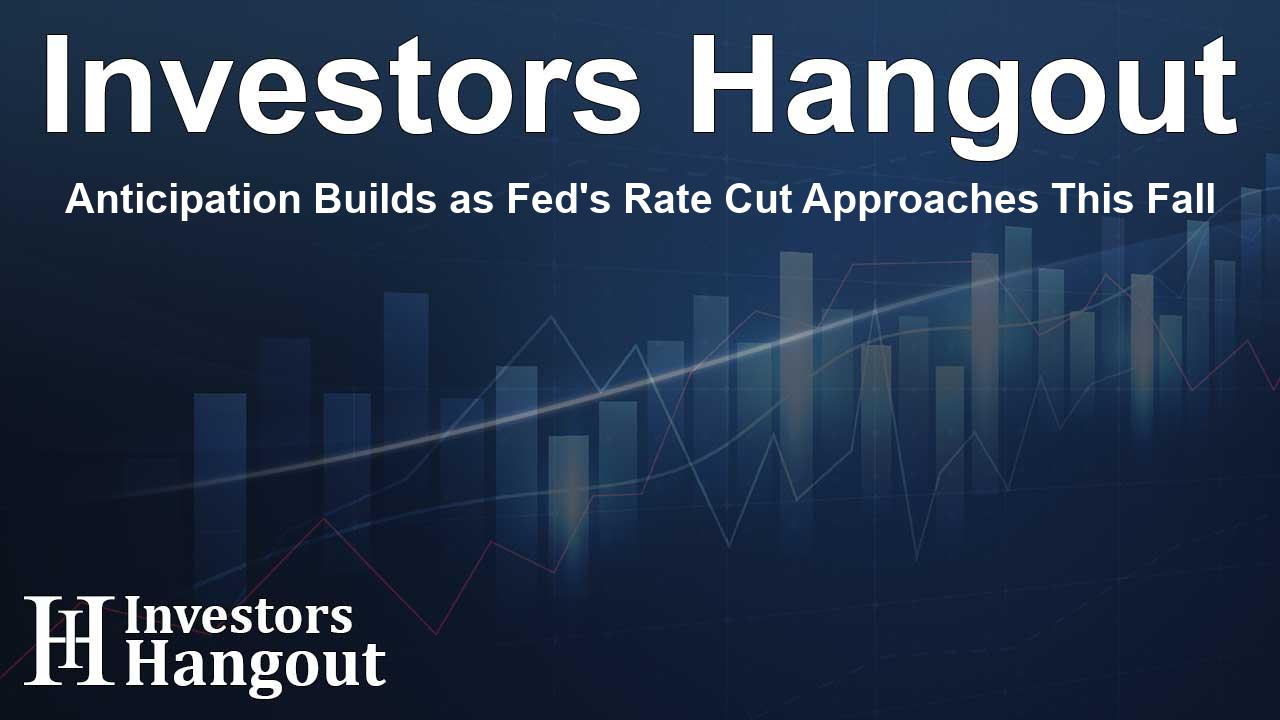Anticipation Builds as Fed's Rate Cut Approaches This Fall

Understanding the Federal Reserve's Upcoming Rate Cut
For many observers in the financial landscape, the upcoming Federal Reserve policy meeting is the culmination of over a year of speculation regarding interest rate adjustments. The anticipation surrounding this pivotal moment is palpable, as experts and analysts seek to gauge the potential implications of a significant shift in monetary policy. A projected quarter-point decrease in the federal funds interest rate signals a potential turning point for the economy and an easing of the financial tightening that has shaped recent conditions.
The Impact of Interest Rates on Economic Behavior
The role of the Federal Reserve in setting interest rates cannot be overstated; it often serves as the barometer for economic health. Over the past year, numerous reports from major financial institutions have analyzed how stocks fluctuate with the potential for easier monetary policy. This dynamic leads to daily inquiries from financial news analysts, who seek to uncover exactly when the Fed might initiate rate cuts and how this might affect both individual consumers and the broader market.
What a Rate Cut Means for Consumers
As analysts project a potential reduction in interest rates as early as mid-September, the impact on consumer behavior is a top concern. Lower rates typically translate into cheaper loans, positively influencing spending habits and boosting consumer confidence. This could be a game-changer for sectors sensitive to interest rates, such as real estate and durable goods.
The Historical Context of Fed Decisions
Reflecting on the Fed's adjustments provides insight into its decision-making process. Following the economic turbulence triggered by the pandemic in 2020, short-term rates were effectively pegged at zero as a means to stimulate growth. This decision injected liquidity into the financial system but also contributed to rising inflation in subsequent years.
As inflation reached a peak of 9% by mid-2022, the Fed shifted gears, ultimately raising rates to combat price surges, ending at 5.5% by mid-2023. The current economic climate, with inflation receding to around 2.5%, suggests that conditions are ripe for rate cuts, aligning with the Fed's mandates to stabilize prices while promoting job growth.
Monitoring Federal Communications
The continuous dialogue from Federal Reserve officials plays a significant role in shaping market expectations. Fed Chair Jerome Powell, among others, has frequently asserted that their actions will be guided by data, particularly concerning inflation and employment statistics. These remarks help frame the narrative as both analysts and investors speculate about the Fed's next moves.
Seizing the Moment: Political and Economic Ramifications
As we approach the Federal Reserve's forthcoming announcement, the political landscape is also under scrutiny. The implications of timing are critical, especially with the impending elections looming. A timely rate cut could play favorably into political narratives, boosting confidence among voters who correlate monetary policy with economic stability.
Future Projections and Market Sentiments
The significance of the upcoming decision transcends the immediate financial implications; it potentially shapes broader economic sentiments and actions. With consumer confidence appearing on the rise amid declining inflation rates, many may speculate that easing monetary policy will bolster economic recovery and facilitate spending, which is integral to sustained growth.
Frequently Asked Questions
How will the Fed's rate cut affect mortgage rates?
A decrease in the federal rate typically results in lower mortgage rates, making home buying more affordable and stimulating the real estate market.
What are the potential risks of cutting rates too soon?
Cutting rates prematurely could lead to renewed inflationary pressures if the economy isn't on a solid recovery path, complicating the Fed's balancing act.
How do interest rate cuts influence stock prices?
Lower interest rates generally make borrowing cheaper for businesses, thereby potentially increasing profits and driving stock prices higher as investor optimism grows.
What role does consumer confidence play in the economy?
Consumer confidence directly affects spending power, which drives economic growth. A confident consumer is more likely to make significant purchases, benefiting many sectors.
What should voters be aware of regarding Fed decisions?
As monetary policy impacts the economy, voters should understand how financial trends may influence their personal finances, including loans and savings.
About The Author
Contact Kelly Martin privately here. Or send an email with ATTN: Kelly Martin as the subject to contact@investorshangout.com.
About Investors Hangout
Investors Hangout is a leading online stock forum for financial discussion and learning, offering a wide range of free tools and resources. It draws in traders of all levels, who exchange market knowledge, investigate trading tactics, and keep an eye on industry developments in real time. Featuring financial articles, stock message boards, quotes, charts, company profiles, and live news updates. Through cooperative learning and a wealth of informational resources, it helps users from novices creating their first portfolios to experts honing their techniques. Join Investors Hangout today: https://investorshangout.com/
The content of this article is based on factual, publicly available information and does not represent legal, financial, or investment advice. Investors Hangout does not offer financial advice, and the author is not a licensed financial advisor. Consult a qualified advisor before making any financial or investment decisions based on this article. This article should not be considered advice to purchase, sell, or hold any securities or other investments. If any of the material provided here is inaccurate, please contact us for corrections.
